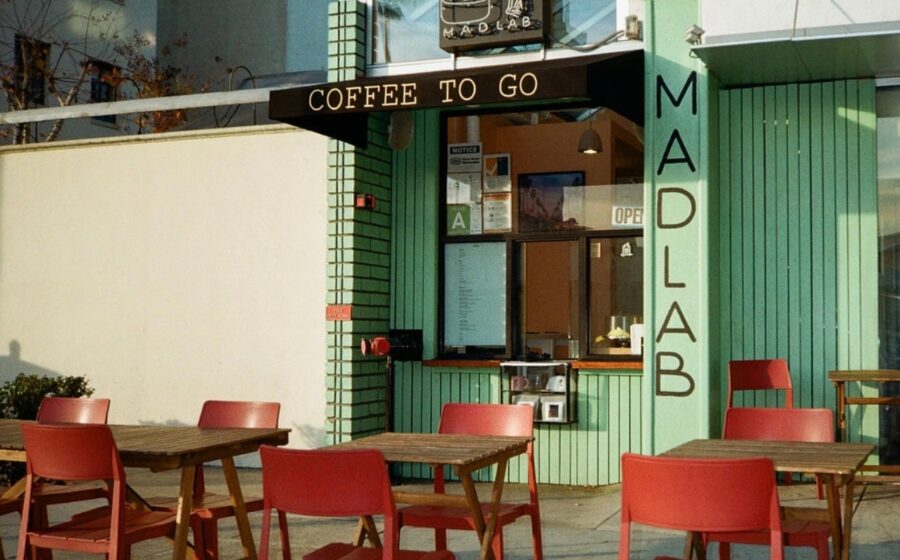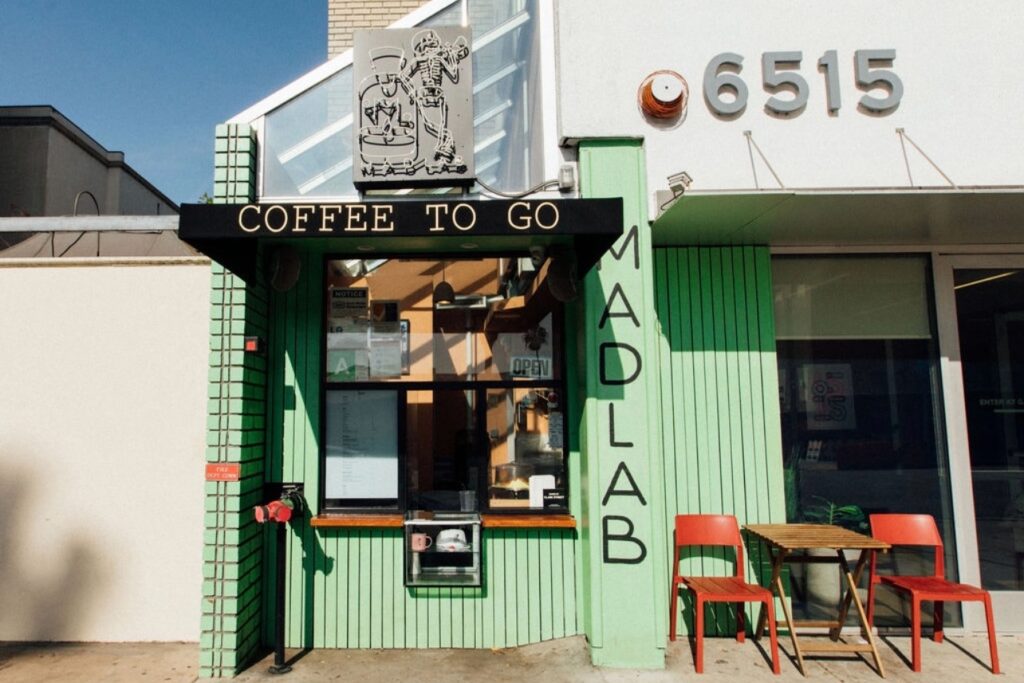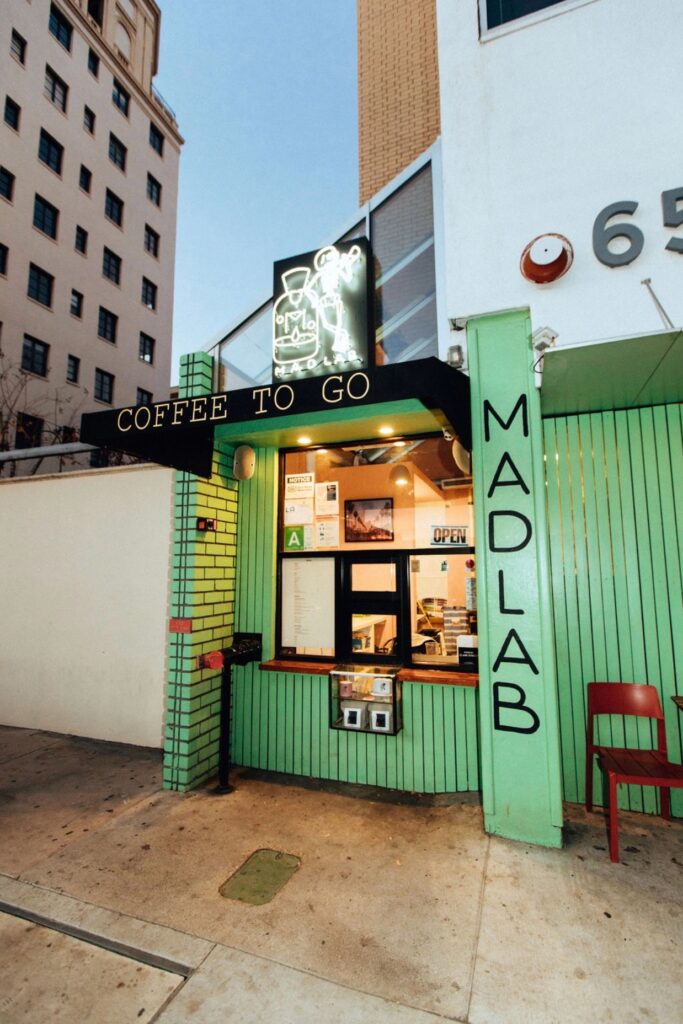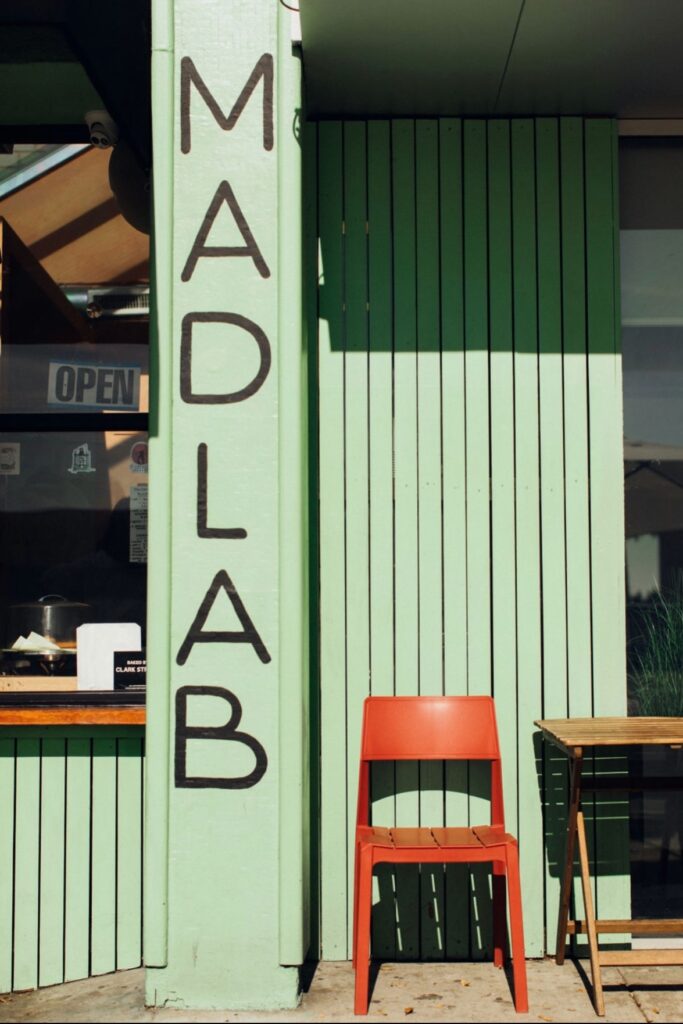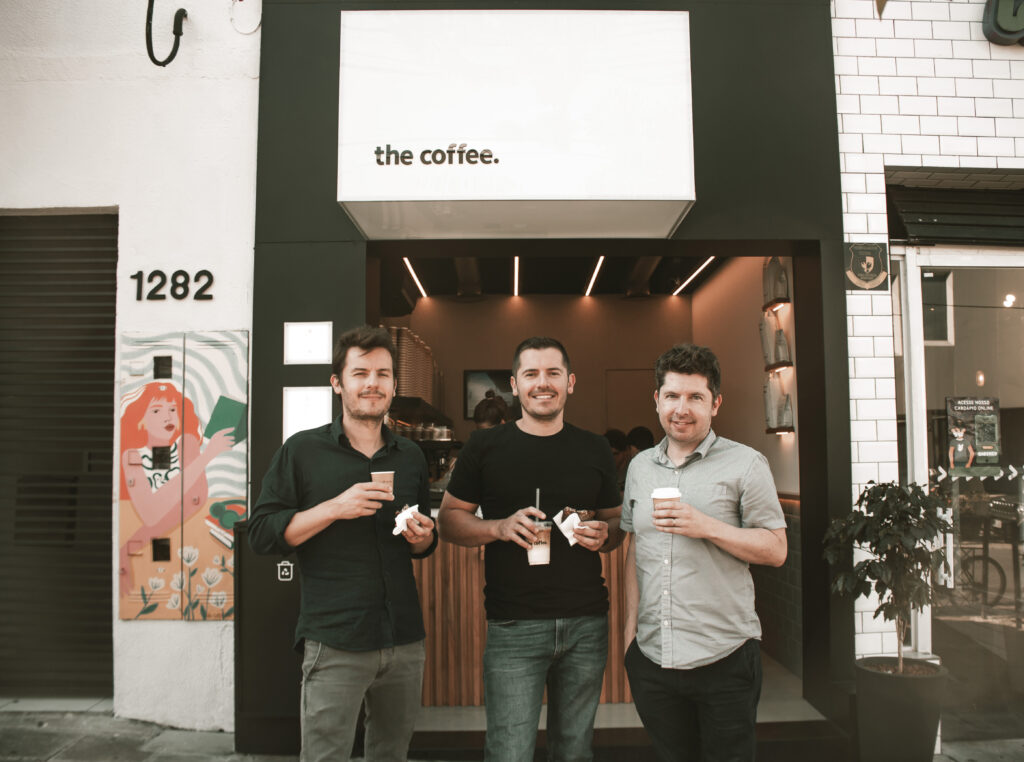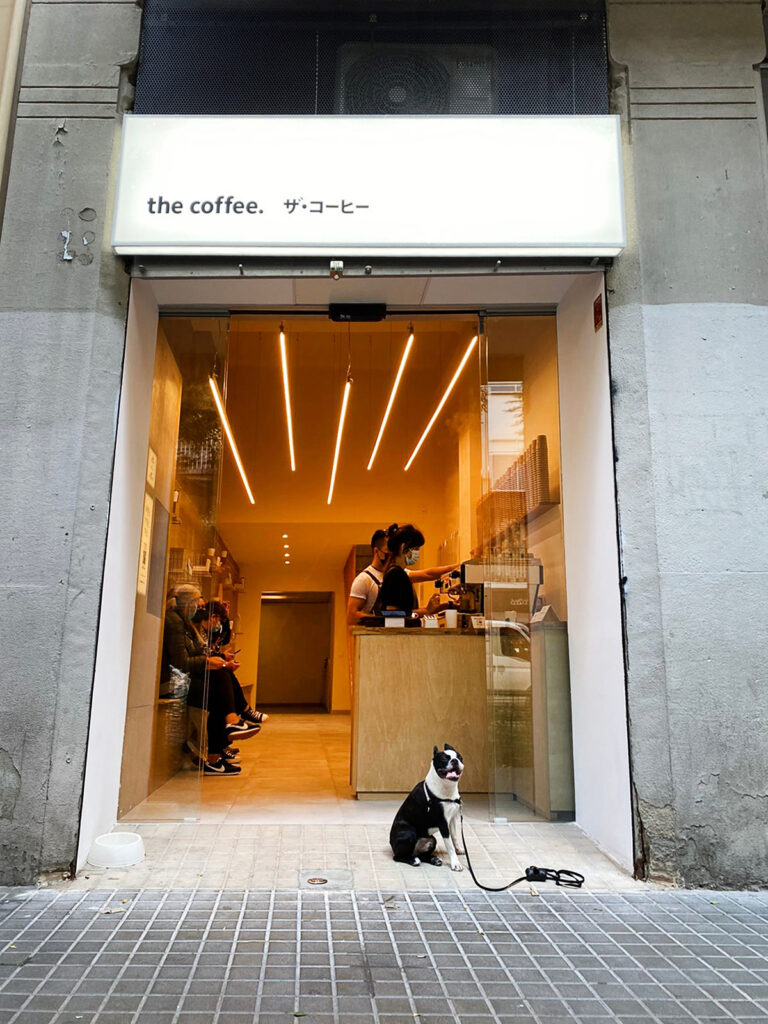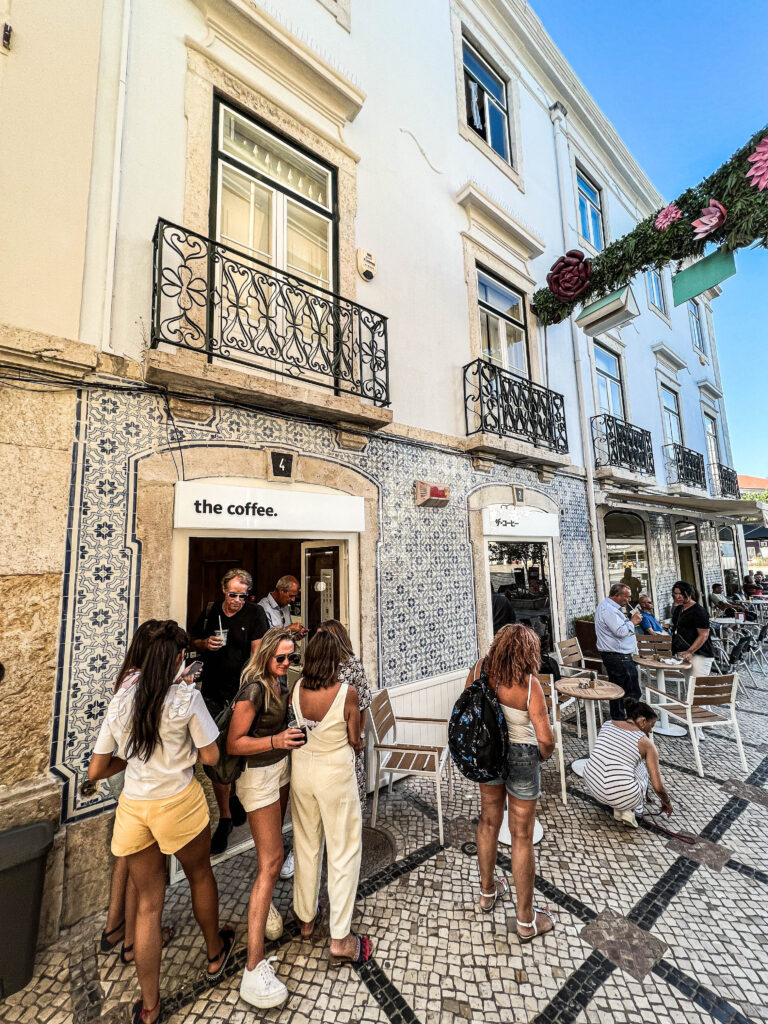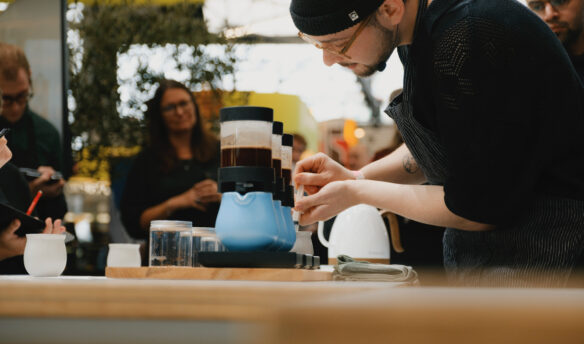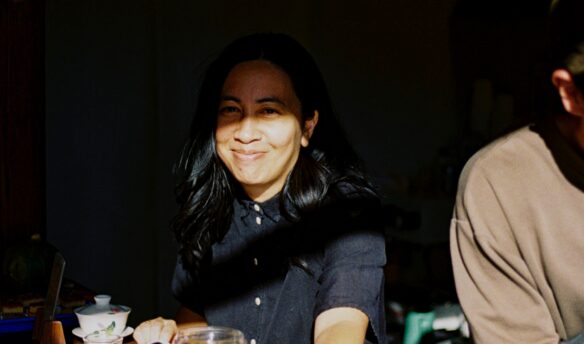We tend to think of small coffee shops as small metaphorically: “small” often denotes that a business is independently owned, separate from a large chain or conglomerate. But small coffee shops can also inhabit small spaces—tiny shops where seating is sparse, fewer employees are needed, and the menu is focused and tight.
These tiny shops present unique challenges, but they also seem to hold something magical. Sure, they have practical advantages—smaller spaces mean lower rent and fewer overhead concerns—but there’s an ineffable vibe that comes from sharing close quarters: you cannot simply enter a small shop and go unnoticed. Small spaces not only force you to get crafty but can foster tight-knit communities and create a sense of community and camaraderie that can get lost in larger shops.
Small Teams, Big Dreams
Starting small was the key to success for Andrew Sinclair. We’re sitting outside the newest Mad Lab Coffee in Los Angeles, which opened on April 8th, 2023—this is his second location, with a third in the works, and he says that it all started when he decided to try his hand at roasting coffee. A retail space came a few years later: a 180-square-foot window with no indoor seating on Sunset Boulevard. When it came to scouting a potential location, a small space is what Sinclair always had in mind.
“The thing that kills you is your rent,” he says, reflecting on the difficulty of opening a coffee shop in Los Angeles. “When you talk about what makes a good coffee shop, everyone talks about ‘you have to have these types of drinks’ or ‘it needs to be this color,’ but the most important aspect, especially in a metro area, is the square footage of your shop and how much you’re paying for your rent.” There’s no one equation for determining how much you should pay in rent—some industry standards suggest rent should cost around 10-20% of your gross sales—but in pricey cities like LA, some shop owners spend 30-50% of their operating budget on rent, a precarious sum to try to maintain.
“Operate within your means” is a phrase Sinclair repeats a few times. Large spaces require more: more money for rent, more money for operating costs like electricity, and more staff members to serve the number of customers you need to keep the shop profitable. Rather than borrowing money to open something bigger, Sinclair focused on a small space they could afford to operate without relying on loans. Avoiding a lease on a space with high rent allowed him to focus on sourcing high-quality coffees and use revenue to focus on paying employees fairly.
The original Mad Lab location does offer places for patrons to sit: there are a few chairs and tables on the sidewalk in front of the window, but Mad Lab mostly operates as a to-go coffee window where people can grab a quick drink. The new space is also small, with a single bench inside for people to sit on.
The small footprint encourages focus: Mad Lab doesn’t serve food, the menu is short, and everything is to go. Some might think that the lack of “amenities” would discourage people from coming, but Sinclair has found the opposite. “People will get coffee and sit down on Sunset Boulevard, just criss-cross applesauce,” he says fondly.
Sinclair finds that operating a small space fosters more intimate relationships with customers. “If somebody walks into your shop and it’s 5,000 square feet, they order and disappear. But [at Mad Lab], there’s nowhere to go while you wait, and I’m gonna talk to you.” That proximity builds relationships, which allows Sinclair to address community needs because he can hear directly from folks. For instance, the new Mad Lab location is in a residential area, and customers are coming in with children more frequently than at the original location. “Why not set up a soft serve station for the kids?”
There are downsides: Sinclair’s car was Mad Lab’s main storage space for a few years. Many cafés save money on supplies like cups and lids by buying in bulk, a strategy that becomes less feasible when there’s nowhere to put extra supplies. Smaller spaces also mean employees often work alone, which can be isolating and stressful during busy periods.
But the equation works so well for Mad Lab that Sinclair is committed to never having a space bigger than 400 square feet or the size of a 20 x 20 room. Starting small was the magic that made scaling and growing Mad Lab successful.
A Small Truth Internationally Recognized
In the Old Town neighborhood of Curitiba, Brazil, another tiny shop led to big success: The Coffee is now an international brand with hundreds of locations worldwide, but when brothers Alexandre, Carlos, and Luis Fertonani started in 2018, they opened in a 32-square-foot space. The original The Coffee location was just a window through which they could pass coffee, which helped the brothers keep rent costs low while the business started.
Staying committed to small spaces was vital when they were ready to grow. “We can rent spaces that many other businesses can not use due to the space, so it is easier for us to find spaces to open small stores,” said Beatriz Galindo, who is in charge of public relations for The Coffee.
They faced some of the same initial problems as Mad Lab, particularly when it came to storage. Being confined to smaller spaces meant The Coffee could only offer a limited number of items because there was nowhere to put all the necessary supplies for a larger menu.
As The Coffee expanded, “we found the need to grow the stores too,” says Galindo, noting they looked to bigger spaces as the brand evolved. Today, The Coffee has several larger locations, some more than ten times the size of their first space, opening up new possibilities. “One of the main reasons we looked into opening bigger stores [was] so that we can offer other kinds of products [and give] more options to our customers,” Galindo says.
But more space means higher rent. The average rent for The Coffee’s smallest spaces is around 1,500 BRL per month (300 USD), while their 400+ square foot spaces average 4,500 BRL monthly (900 USD). Nevertheless, the trade-off has worked for The Coffee: the Fertonani brothers began franchising the brand, and now there are 211 stores in six countries across Europe and South America.
Customers flocked to the original tiny shop. The brothers were inspired by the intersection of design and technology, and locations utilize minimalist design features against a black, white, and wood palette. Although spots differ, many have fully-open front facades instead of doors, so smaller locations feel bigger, and indoor and outdoor spaces blur together.
Galindo is quick to point out that with more locations, The Coffee has options to meet the needs of all customers. Those that like the vibe and feel of the small, original store can still find that in newer locations, but for folks that want to sit down and hang out for a while, there are stores with indoor seating. “We are focusing on opening bigger stores,” Galindo says, while staying true to their original, tiny cafe roots.
As I’m sitting outside the new Mad Lab location with Sinclair, people jump in to congratulate him on the opening. Some are locals, and Sinclair tells me about all the new people he’s met since they opened their doors a few days before. He takes a moment to look behind him and watch people as they stumble across the newly-opened cafe. “There’s magic in smaller spaces,” he says. The folks pouring out of Mad Lab seem to agree.



